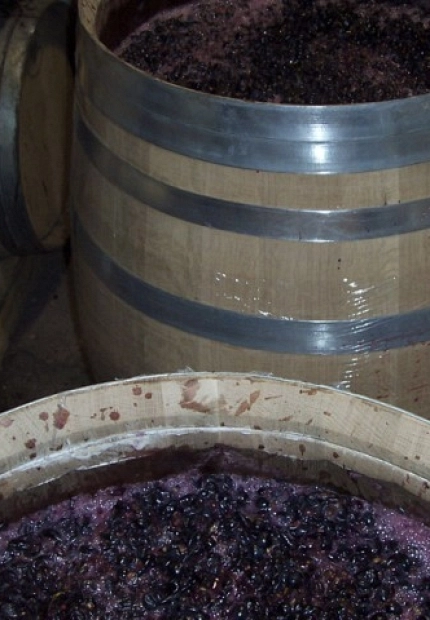Alcoholic fermentation of wines
Alcoholic fermentation is a fundamental process in winemaking, turning must, the freshly squeezed juice of grapes, into a fascinating and complex alcoholic beverage. This process, which has been perfected over millennia, combines science and art to produce wines that delight our senses.
The alcoholic fermentation process begins with the harvest of the grapes. The choice of when to harvest is crucial, as it determines the concentration of sugars in the must and, therefore, the alcoholic potential of the resulting wine. The freshly harvested grapes undergo careful selection and are destemmed to separate the clusters from the branches.
Once destemmed, the grapes are crushed to release the juice that contains sugars, acids and aromatic compounds. This must is transferred to the fermentation tanks, where the magic of alcoholic fermentation begins. Yeasts, single-celled microorganisms naturally present in the skin of grapes, become key players in this process.
Yeasts, especially those of the Saccharomyces cerevisiae species, consume the sugars present in the must and transform them into ethyl alcohol and carbon dioxide. This process of converting sugars into alcohol is what we know as alcoholic fermentation. Temperature and other environmental factors can influence the speed and efficiency of fermentation.
During fermentation, several byproducts are generated that contribute to the organoleptic characteristics of the wine. These include esters, higher alcohols and phenolic compounds. These elements provide unique aromas and flavors to the wine, giving rise to the complexity that we appreciate in a well-crafted glass.
The duration of fermentation varies depending on the style of wine desired. For fresh, fruity white wines, fermentation can last one to three weeks, while for more robust red wines, fermentation can last two to four weeks or more. During this time, winemakers carefully monitor the evolution of the process, adjusting factors such as temperature and aeration to optimize conditions for the yeasts.
A crucial element in fermentation is temperature control. Too much heat can cause the loss of delicate aromas and flavors, while too low temperatures can slow or stop fermentation. Technological advances have allowed winemakers to use temperature control equipment to maintain optimal conditions and ensure successful fermentation.
Once fermentation is complete, the wine is separated from solid waste, such as skins and seeds, in a process known as pressing. Red wines often go through an additional phase called maceration, where the must remains in contact with the skins to extract color, tannins and additional aromatic compounds.
Subsequently, the wine is transferred to barrels or storage tanks for the aging phase. During this period, which can last from a few months to several years, the wine continues its evolution, developing more complexity and softening its characteristics. The choice of the type of barrel and its duration of use also influence the final result.
Finally, the wine is filtered and bottled, ready to be enjoyed. Alcoholic fermentation is not just a technical process, but an art that has been perfected and refined over generations. Each stage of the process, from choosing grapes to aging in barrels, contributes to the unique personality of each wine.
In conclusion, alcoholic fermentation is an essential chapter in the narrative of wine making. This process transforms the grapes into a drink that goes beyond simple, incorporating the magic of the yeasts, the influence of the terroir and the skill of the winemaker. Each bottle tells the story of a journey from the vineyard to the glass, where alcoholic fermentation plays a central role in creating unforgettable sensory experiences.

